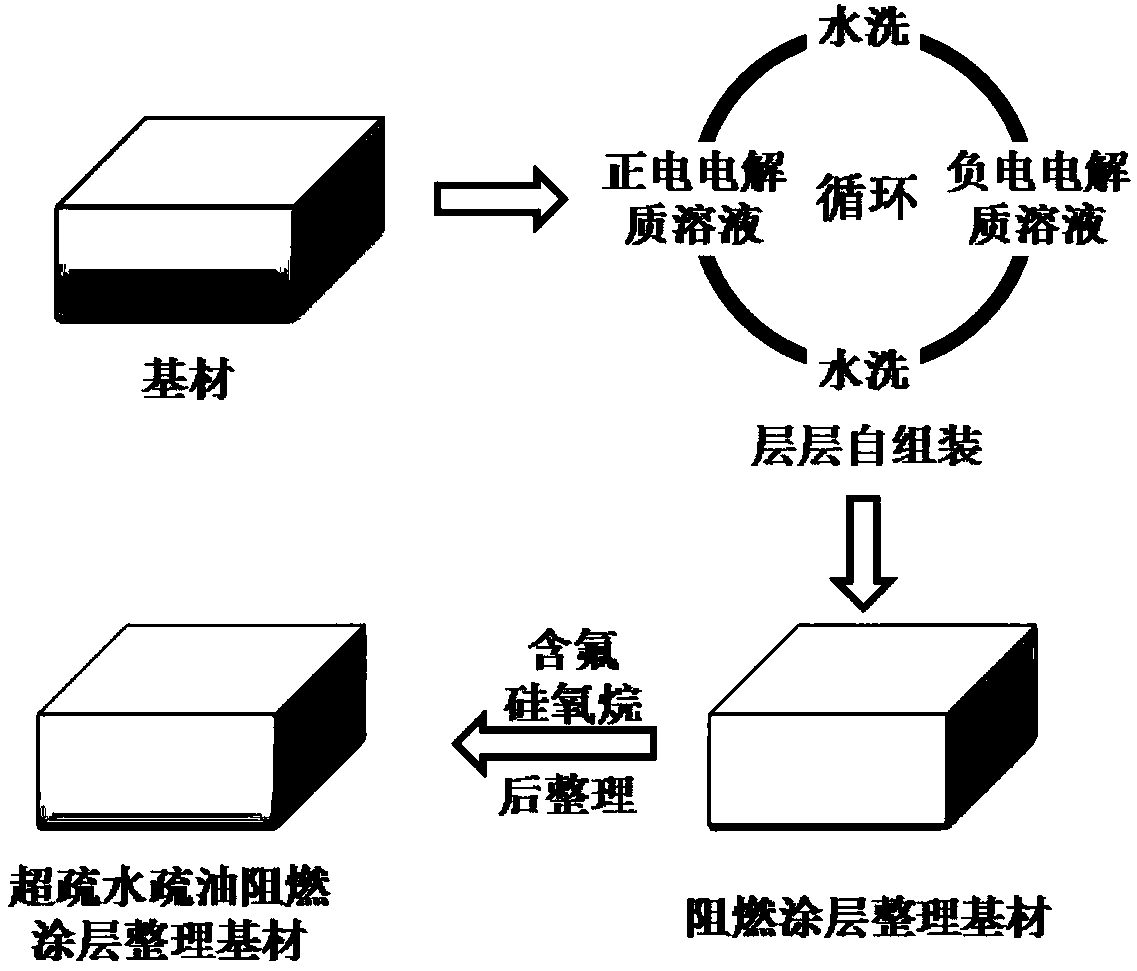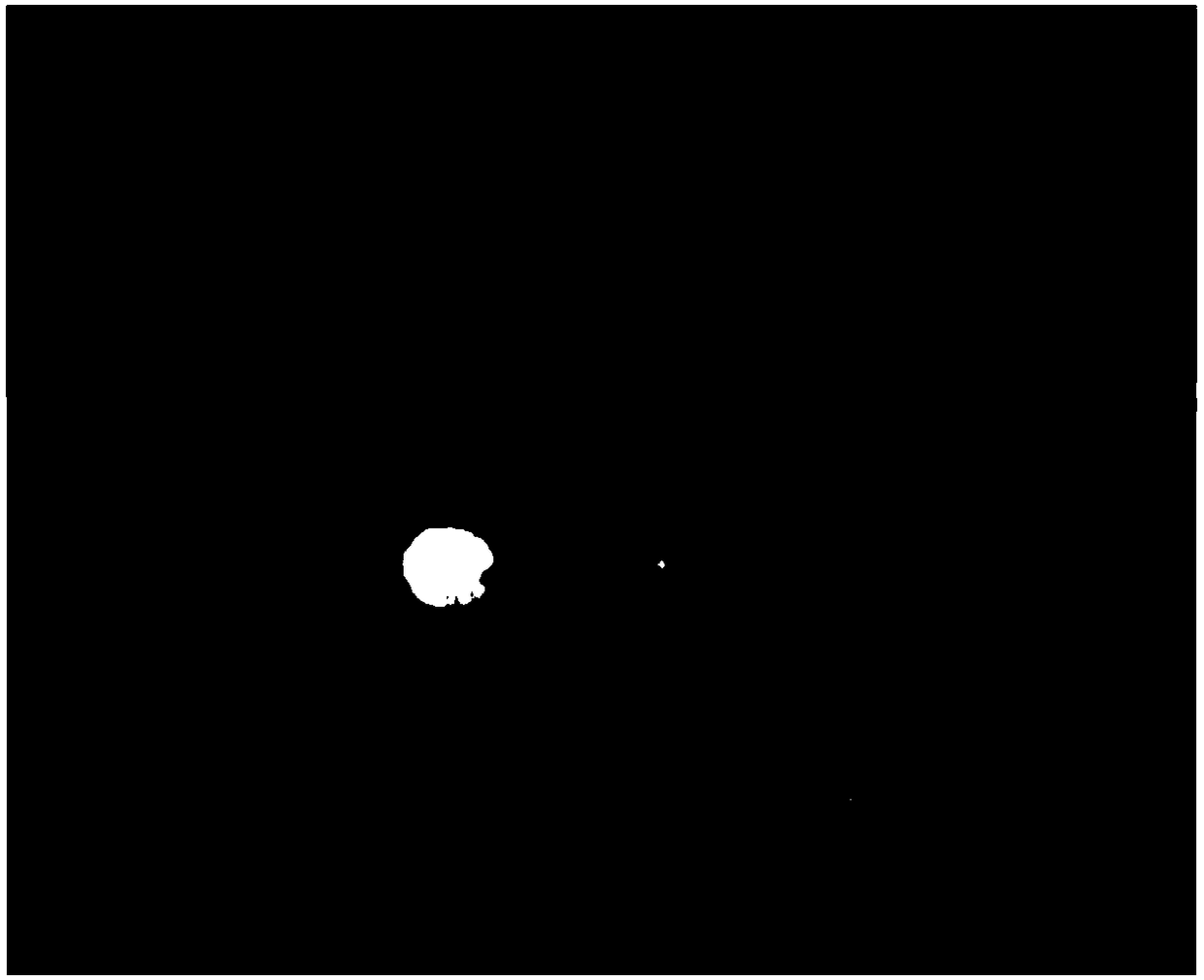Method of super hydro-oleophobic flame retardant coating finishing base material
A flame-retardant coating, super-hydrophobic technology, applied in flame-retardant fibers, fiber treatment, wood treatment, etc., can solve the problem of less attention to the flame-retardant properties of polymer materials, and achieve improved hydrophobic and oleophobic properties, excellent resistance Flammable, wide-ranging effects
- Summary
- Abstract
- Description
- Claims
- Application Information
AI Technical Summary
Problems solved by technology
Method used
Image
Examples
Embodiment 1
[0026] Prepare 0.5% (mass fraction) aqueous solutions of ferric nitrate and diethylenetriaminepentamethylenephosphonic acid, respectively. Soak the cleaned cotton fabric in ferric nitrate solution for 1 minute, take it out and wash it with deionized water for 1 minute to obtain a substrate modified with a positively charged electrolyte layer; the substrate modified with a positively charged electrolyte layer Soak in diethylenetriaminepentamethylene phosphonic acid solution for 1 minute, take it out and wash it with deionized water for 1 minute to complete the self-assembly of the first bimolecular layer on the surface of the substrate; repeat the above process, in ferric nitrate solution and Diethylenetriaminepentamethylenephosphonic acid solution is alternately treated 2 times to obtain a substrate modified with 2 bimolecular layers; adopt 1% (mass fraction) heptadecafluorooctyltrimethoxysilane solution to treat the above-mentioned After-finishing the base material, and the...
Embodiment 2
[0029] Prepare 2% (mass fraction) aqueous solutions of ferric nitrate and diethylenetriaminepentamethylenephosphonic acid, respectively. Soak the cleaned aramid fabric in ferric nitrate solution for 5 minutes, take it out and wash it with deionized water for 1 minute to obtain a substrate modified with a positively charged electrolyte layer; the substrate modified with a positively charged electrolyte layer Soak the material in diethylenetriaminepentamethylenephosphonic acid solution for 5 minutes, take it out and wash it with deionized water for 1 minute to complete the self-assembly of the first bimolecular layer on the surface of the substrate; repeat the above process, in the ferric nitrate solution and diethylenetriaminepentamethylenephosphonic acid solution to alternately process 5 times to obtain a substrate modified with 5 bimolecular layers; adopt 5% (mass fraction) heptadecafluorooctyltriethoxysilane solution to the above-mentioned The treated base material is subjec...
Embodiment 3
[0032] Prepare 5% (mass fraction) aqueous solutions of ferric nitrate and diethylenetriaminepentamethylenephosphonic acid, respectively. Soak the cleaned cotton fabric in ferric nitrate solution for 15 minutes, take it out and wash it with deionized water for 5 minutes to obtain a substrate modified with a positively charged electrolyte layer; the substrate modified with a positively charged electrolyte layer Soak in diethylenetriaminepentamethylenephosphonic acid solution for 15 minutes, take it out and wash it with deionized water for 5 minutes to complete the self-assembly of the first bimolecular layer on the surface of the substrate; repeat the above process, in the ferric nitrate solution and Diethylenetriaminepentamethylenephosphonic acid solution was alternately treated 30 times to obtain a substrate modified with 30 bimolecular layers; 20% (mass fraction) of heptadecafluorooctyltrimethoxysilane solution was used to treat the above-mentioned treatment After-finishing t...
PUM
 Login to View More
Login to View More Abstract
Description
Claims
Application Information
 Login to View More
Login to View More - R&D
- Intellectual Property
- Life Sciences
- Materials
- Tech Scout
- Unparalleled Data Quality
- Higher Quality Content
- 60% Fewer Hallucinations
Browse by: Latest US Patents, China's latest patents, Technical Efficacy Thesaurus, Application Domain, Technology Topic, Popular Technical Reports.
© 2025 PatSnap. All rights reserved.Legal|Privacy policy|Modern Slavery Act Transparency Statement|Sitemap|About US| Contact US: help@patsnap.com



